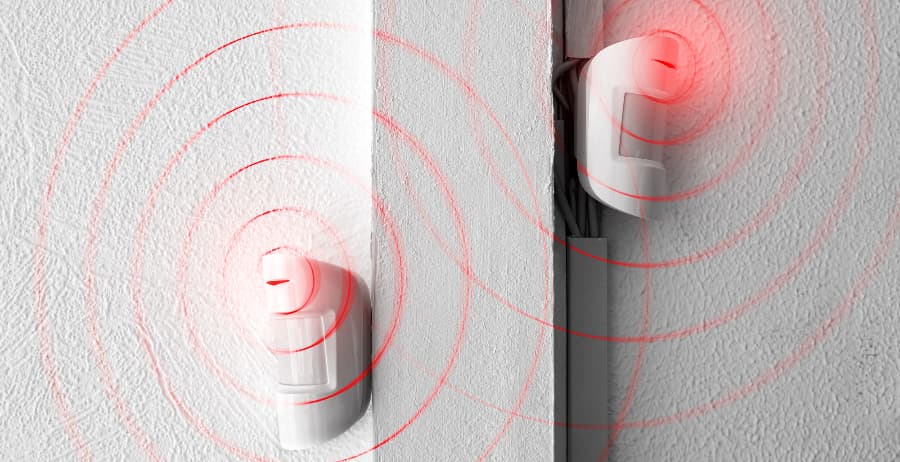How to minimize motion sensor false alarms in your Ithaca home

Motion sensors are crucial components in a full-featured home security strategy, as they’ll alert you whenever suspicious activity is going on at your house. Regrettably, they’re also susceptible to false alarms, causing Ithaca homeowners to lose sleep. If you’re trying to find solutions, explore our recommendations for cutting down on motion sensor false alarms.
What triggers motion detector false alarms?
The bulk of residential motion detectors use passive infrared (PIR) technology to find activity. They sense fluctuations in infrared radiation inside their coverage zone and can tell when someone is moving by their heat signature. False alarms are often triggered by:
- Pets leaping on tabletops or furniture
- Streams of bright sunlight through a window
- Different heat sources, like air ducts and fireplaces
- Drastic temperature or humidity shifts, which cause equipment to be hypersensitive or non-functional
Microwave motion sensors are another frequently used option that discovers movement by continuously broadcasting and analyzing electromagnetic waves. Known as active motion detectors, they spot movement through modifications in the returning signal. Any unexpected activity, like curtains moving when an HVAC fan turns on, can set off an alarm.
Ideas for reducing motion sensor false alarms at your Ithaca home
In addition to losing sleep, motion sensor false alarms can be particularly troublesome as they may lower your sensitivity to genuine threats. Moreover, recurring false alarms might become an annoyance for emergency providers and may impact ensuing response times. Luckily, you can help avoid them by following these suggestions:
- Investigate the sensitivity parameters of your sensors and adjust to your animal’s behavior and size.
- Avoid directing them at busy areas like food bowls, even when you have pet-friendly detectors.
- Avoid pointing motion detectors at windows receiving bright sunlight.
- Make certain rooms are sufficiently insulated to prevent temperature fluctuations.
- Frequently dust and wipe off devices to ensure proper function.
- Monitor batteries and change as needed. Many devices will even inform you when batteries are low.
- Consider a professional installation to ensure correct positioning.
You might also opt for multi-function devices that employ both passive and active means to identify activity, resulting in greater accuracy.
How to incorporate motion sensors into your Ithaca smart home?
Integrating motion sensors into an automated smart home is a terrific way to boost your convenience and safety. You’ll be able to do the following:
- Get instant alerts on your smartphone when movement is found. You might also use them to update you when your kids arrive home from school.
- Configure cameras to record any time a motion sensor triggers.
- Change lighting or thermostat settings according to whether people are home. This feature can help lower energy expenses.
Leading smart home devices, like the ones offered by Vivint, continue to employ artificial intelligence (AI) to better detect actual threats and reduce false alarms.
Design your Vivint smart home with advanced motion sensors
Get the best motion sensors in Ithaca from Vivint when you design your comprehensive smart home. Our sensors are pet-sensitive and allow you to initiate numerous automation actions. You’ll also benefit from the five-year battery life and automatic smartphone notifications. Contact (607) 600-9658 today to design your system.